
By Fr. Kyle Schnippel
Marital Imagery of the Priesthood
Michael Novak, writing in the Journal First Things, comments on the meeting between Pope John Paul II and Dr. George Carey, the Archbishop of Canterbury, in May 1992. In the interim period between Inter Insigniores and this meeting, the Anglican Communion had progressed on its movement towards the acceptance of women into the sacramental priesthood. In response, he noted an unnamed Vatican official as saying that "the Catholic Church, for fundamental theological reasons, does not believe it has a right to authorize such ordination." Novak continues:
For fundamental theological reasons. One wonders what these reasons are. Apart from a splendid essay ("Priestesses in the Church?") by C. S. Lewis, one scarcely ever encounters a theological argument against the proposition that women should be ordained priests. One hears about "tradition," and about the "example" of Jesus Christ — these are solid reasons, but not wholly persuasive. The inquiring mind is restless until it comes to understand the theological reasons why Jesus did as He did, and why the tradition is as it is.
Until the Church is able to articulate a consistent, deep and prayerful theological approach to this question, it will continue to be debated by those who wish, against the wisdom of the ages, for the teaching to change.
Novak formulates the answer to this challenge in three parts: first, the Catholic priest has not only a ministerial duty, but also a representative, liturgical role; second, the maleness of the priesthood is consistent with the metaphors of gender through which, predominantly, God has chosen to reveal Himself; and finally, in the Incarnation, God did not chose to come as a gender-neutral 'person,' he chose to come in male flesh, as a Son. While none of these arguments is persuasive, when taken as a whole, they begin to have a weight of persuasion.
Unfortunately, in the time since Novak's article was published in April of 1993, this question has lain mostly dormant. Advances in theological understanding, specifically with respect to John Paul's groundbreaking approach in The Theology of the Body have yet to be adequately applied to the priesthood. It may seem strange to apply a teaching on love and marriage to the priesthood, but when one considers the spousal nature of the priest as wedded to the Church, and hence also to the community that the priest has been chosen to lead, this becomes a necessary aspect of any theology of the priesthood.
As I preach on Vocations to the Priesthood and Religious Life, one of the topics I mention is celibacy, or those who "renounce marriage for the sake of the kingdom of heaven" (Mt. 19:12). This call to the celibate life is a counsel, not a command, and is therefore a choice that is proper to a rather exceptional vocation, and not a call that is universal and ordinary for all the faithful. There is a supernatural dimension to this choice as well, for it is done "for the sake of the Kingdom," and not for the glory of the one chosen.
In response to this, the priest becomes, in a spiritual sense, wedded to the Church. He is called to give his life completely for the life of his people, so that he gives life not just to one specific nuclear family, but to the family of the Church. In this, he is to the lead the People of God closer to their home in heaven. The priest is not just a functionary, but is a representative of Christ himself, leading the people closer to Himself. Back to Pope Paul VI:
The Christian priesthood is therefore of a sacramental nature: the priest is a sign, the supernatural effectiveness of which comes from the ordination received, but a sign that must be perceptible and which the faithful must be able to recognize with ease. The whole sacramental economy is in fact based upon natural signs, on symbols imprinted upon the human psychology: "Sacramental signs," says Saint Thomas, "represent what they signify by natural resemblance". The same natural resemblance is required for persons as for things: when Christ's role in the Eucharist is to be expressed sacramentally, there would not be this "natural resemblance" which must exist between Christ and his minister if the role of Christ were not taken by a man: in such a case it would be difficult to see in the minister the image of Christ. For Christ himself was and remains a man. (Inter Insigniores 5)
There must be a resonance between what we say and do, a natural convergence between our beliefs and our practices. Because Christ is inescapably a man, in order to more fully act in persona Christi, the priesthood also is appropriately reserved to men.
In the Economy of Salvation, the process of how our salvation was won by Christ's saving death on the Cross, Jesus is the author of the Covenant, the Bridegroom and Head of the Church, and his saving death is made most real to us today in the Sacrificial Banquet of the Eucharist. Therefore, as Christ continues to lead and guide His Church, that role of leadership is properly filled by a man. It is important to note, however, that this role of leadership does not signify a personal superiority over others, but that the priest has a unique role to play in the way the Salvation won by Christ is meted out to the world today.
Finally, it is important to reiterate the point made at the beginning of this article: no one has a right to the priesthood. The authentic call to the Vocation is a call that is based in service to God and His Church, it is a desire to lay down one's life for something that is greater than the individual, for he gives himself completely to Christ. In this, the priest becomes a sign and symbol of Christ himself, wedded to the Church, and giving life to the faithful.
Fr. Kyle Schnippel is the vocations director for the diocese of Cincinnati, Ohio.
From CatholicExchange.com








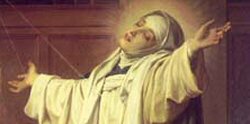


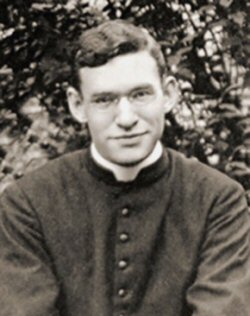


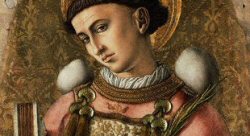





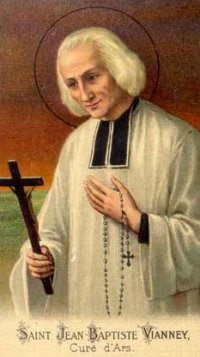
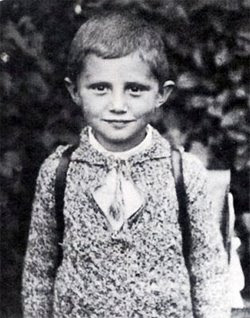


No comments:
Post a Comment